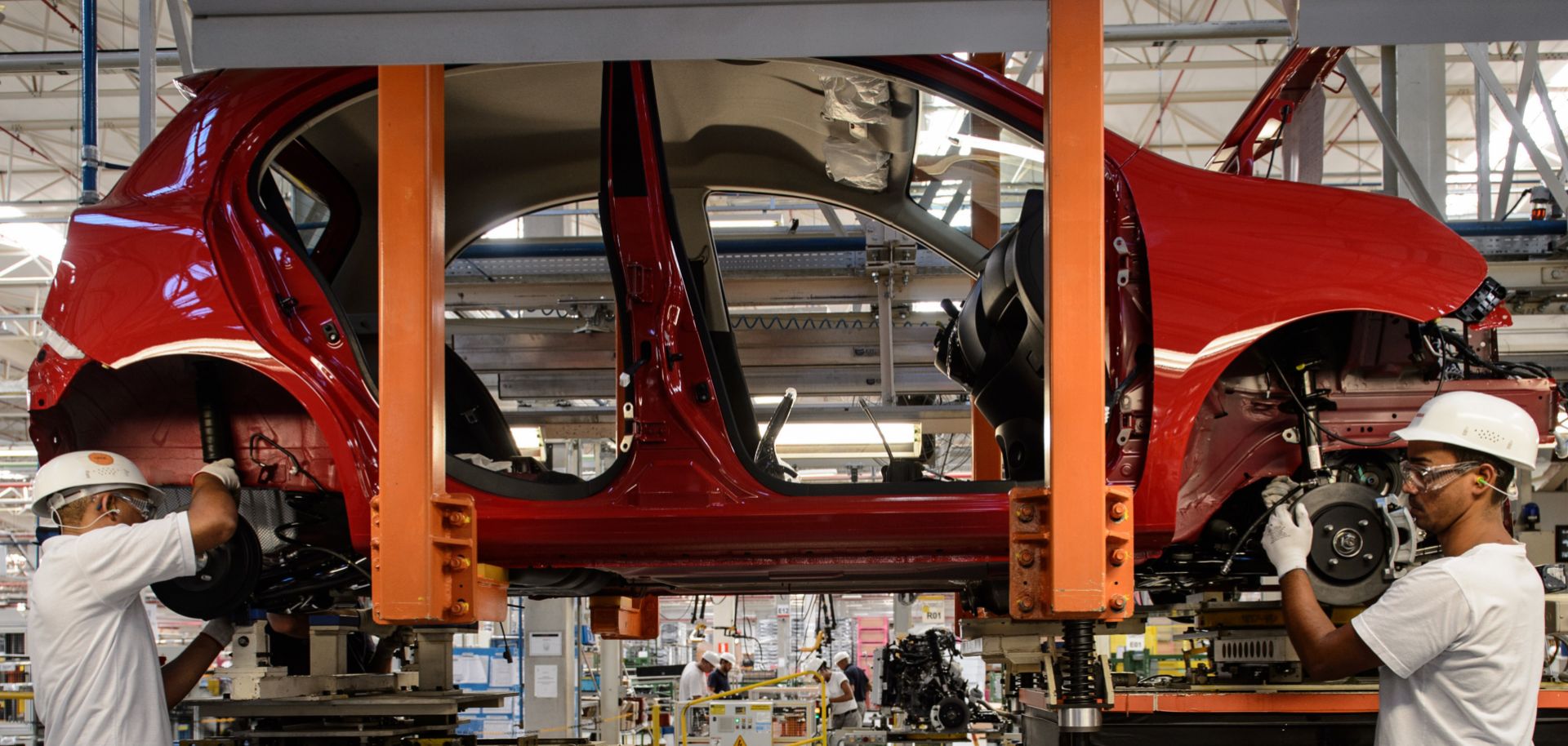ASSESSMENTS
For Mercosur, High Auto Tariffs Are All Part of the Game
Sep 18, 2018 | 09:00 GMT

Workers assemble cars at the Nissan plant in Resende, Brazil, during February 2015. Most major automakers have factories in Brazil and Argentina. The assembly line of the March and Versa models at Nissan's Industrial Complex in Resende, 160 km west of Rio de Janeiro, Brazil, on Februrary 3, 2015. The Nissan plant in Brazil will be able to produce 200,000 cars and utility vehicles per year. The company aims to achieve 5 percent of the market share by 2016 in Brazil, the fourth largest automotive market in the world.
(YASUYOSHI CHIBA/AFP/Getty Images)
Highlights
- Most of the Common Market of the South's auto production stays within the trade bloc, better known as Mercosur.
- Mercosur has been taking gradual steps toward lifting the trade barriers around its automotive market by reducing import tariffs.
- The European Union and Mexico will be the trade partners likely to benefit the most from Mercosur's trade liberalization policies.
Subscribe Now
SubscribeAlready have an account?
